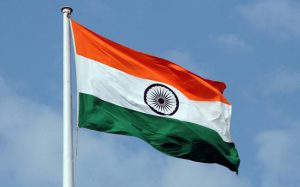22 July 1947
The National Flag of India was adopted
What happened?

The National Flag of India was adopted in its present form during the meeting of the Constituent Assembly held on 22 July 1947. Read more on the background of the tricolour and the meaning of its colours and symbols for the IAS exam.
National Flag of India
- The version of the flag closest to the current one came into existence in 1923. It was designed by Pingali Venkayya and had saffron, white and green stripes with the spinning wheel placed in the white section. It was hoisted on April 13, 1923, in Nagpur during an event commemorating the Jallianwallah Bagh Massacre. It was named the Swaraj Flag and became the symbol of India’s demand for Self-rule led by the Indian National Congress.
- The resolution to adopt the tricolor as the National Flag of India was passed in 1931. On July 22, 1947, the Constituent Assembly of India adopted the Swaraj Flag as the National Flag of Sovereign India with the Ashok Chakra replacing the spinning wheel.
Indian National Flag Colours Meaning
- The National flag of India is a horizontal tricolour of deep saffron (Kesari) at the top, white in the middle and dark green at the bottom in equal proportion.
- The ratio of the width of the flag to its length is two to three.
- In the centre of the white band is a navy-blue wheel that represents the chakra. Its design is that of the wheel which appears on the abacus of the Sarnath Lion Capital of Ashoka.
- Its diameter approximates the width of the white band and it has 24 spokes.
See previous ‘This Day in History’ here.
Also See:
| Lion Capital & Sanchi Stupa |
| National Emblem of India |
| National Song of India |
Comments